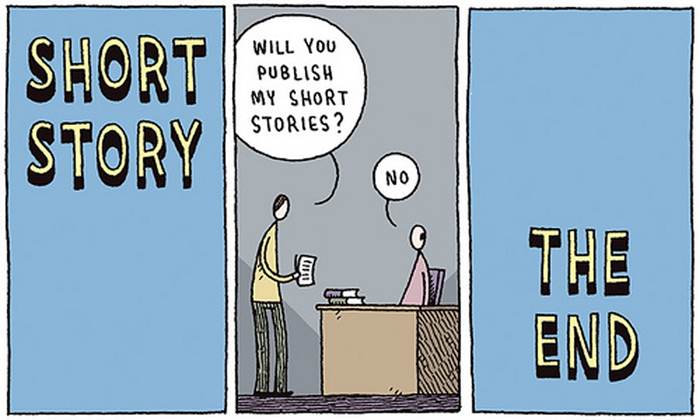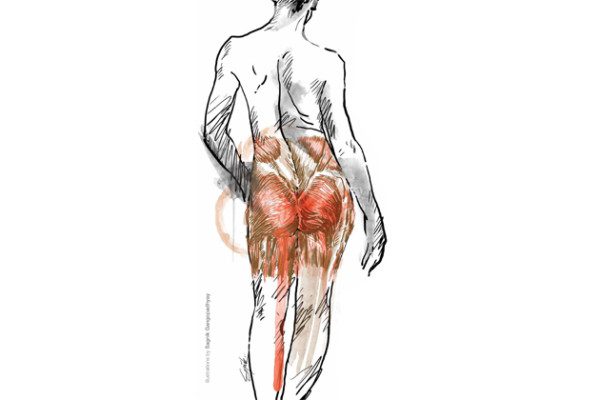She folded it carefully along the creases, the scribbled piece of paper, and stuffed it back into the rusted olive green tin jar. As she saw it sink in the ocean of other such chits, she knew she had read them all that day – all the things she had ever wished for, every Christmas.
Since her convent school days in the small town, where people lived on food, water and dreams, she would save a wish each year for Santa. She didn’t remember which ones came true, except for the blue frilly frock she has a photograph in – by then she knew her mother went through the jar every year. Holding a balloon and licking a lollipop, two little ponytails barely touching her ears, elated to see her dad that one time in a year. She glanced at this favourite photograph of her’s, pinned to the soft board above her desk, whenever she would be losing out on hope. She did so on that late night too when she was leaving work to take a bus back home. Her mother was up waiting for her that night, all night.
Putting the jar aside she sat still. Staring at her embellished self in the mirror, shining away in a red-pink wedding ‘lehenga’, she clutched on to her abdomen with all her force. She felt those pangs again. The bruises in her vagina hadn’t healed in all these years. Will that night make them worse? Will he treat her the same way as the perpetrator of her insides the previous time?
Alas! It wasn’t Christmas.
Have stories to tell but unsure about the time or tact to fill pages? Have issues to bring to light but not many words to vent in? I was at a similar position while penning down my thoughts in a prose form above. Only 265 words, I thought to myself. I read the story again and again only to realise that it indeed was a very short story, but a story nonetheless – containing all its elements and capably conveying all I want to even through those few words. I was grappling with this issue of my story’s size when the universal question came to my mind, only in a different context, does size matter? On further research, I chanced upon this recognised form of writing widely known as flash fiction, micro fiction or postcard fiction where a story must be as long as to fulfil the criteria of fitting on the back of a postcard. The recent death of the telegram de-motivates this Romantic idea of writing stories on postcards, but in the digital age this form of very short story writing is picking up – only on a different medium. History has it, micro fiction was not created to satisfy the small attention spans sadly synonymous with the twenty-first century, or to benefit readers who prefer online material to paperbacks. Rather despite its ties to our contemporary culture, and survival strategies to fit on laptop and tab screens, trend on Twitter and be spread through text messages, its historical existence in world literature can be traced back to the 17th century if the Japanese haibun is to be seen as a form of micro fiction. Many literary giants – Hemingway, Anton Chekhov, Franz Kafka, O Henry and Arthur C Clarke, to name a few – have written memorable collections. But they were largely seen as exceptions that prove the rule: publishers and authors tend to be wary of short-story collections due to the risk of being critically overlooked and, worse, lower sales. Micro fiction has been a sidelight in our culture ever since, but the internet has created a voracious appetite to feed of late.
Starting off as a quiet Renaissance of American short fiction – where the impact is large, yet words are few – micro fiction often contains the archetypal story elements: protagonist, conflict, obstacles or complications, and resolution. One feature often seen as the definitive hallmark of micro fiction is the ‘twist’. However, unlike a traditional short story, the limited word length often forces some of these elements to remain unwritten – that is, hinted at or implied in the written storyline. Different readers thus may have different interpretations. Influenced by Impressionism and Symbolism, this form can lean more towards poetry than prose in some cases, even though it keeps the structure of prose whilst maintaining its ‘fiction’ categorisation. It is innovative, fresh, and yet relates in a realistic way to the uses of language when we speak, or tell stories. Like a well-cut, polished diamond, good short-form writing displays the quality of the author’s thoughts as well as his facility with words: all in a brief but elegant package. It is ancient and (post)modern, prose and poetry, the metaphorical and the mundane. The macro in a micro, the ship in a bottle – it does not want to be defined. It wants to be explored, changed and renewed.
‘Cut the long story short’ is how micro-fiction can be described colloquially, after all some micro fiction can be as little as 100 words. Interestingly in China the style is frequently called a “smoke long” or “palm-sized” story, since the story finishes before the reader finishes smoking a cigarette. In the West, this type of fiction has also been dubbed as ‘mobile-phone fiction’ or even ‘thumb novels’. Here chapters are not punctuations to a long winding story, yet the beauty and depth of these short stories is unfathomable and too bold to be belittled. The writers have the liberty to write more daring, playful and brutal stories – less shackled by the constraints of realism. Literature Professor Sumit Chakrabarti of Presidency University, Kolkata recently judged a freshers’ competition on Micro Fiction conducted by the college’s Literary Society. The 30 odd participants were to write not more than 150 words on arbitrary topics assigned to each by the word sack and all within 20 minutes. On judging the first of its kind competition, Sumit said, “Micro fiction is an eye opener to people into traditional ways of reading and writing literature and in this age of digital humanity, it is important to be adapting. This impressionistic form of literature has a lingering quality and poem-like impact because of which it touches the reader at a very personal level. I enjoyed reading the interesting submissions and though people might feel it is a manageable style of writing, I know it is not. Micro fiction will go a long way in bringing people back to reading.”
As the Professor pointed out, this recently popular form appears deceptively simple when compared to an epic novel, but finding ways to condense one’s story to characters as few as 150-300 words can be more challenging than filling thousands of pages. Short-form writing is a perfect laboratory for experimenting with new subjects, ideas and styles of writing for ‘beta testing’. In recent decades the traditional outlets for individual short stories have dwindled, with literary magazines closing or shrinking across the world. Moreover, the single-serving quality of a short narrative is the perfect art form for the digital age where stories can be easily consumed on screens while commuting, infinitely downloaded and shared. Ernest Hemingway’s often-quoted sentence, ‘For sale: baby shoes, never worn’ is an example of micro fiction before it was even categorised as a form, and came about after Hemingway accepted the challenge of writing a story in six words. Despite the small word count, there is clearly a narrative, string of emotions and an appeal in the sentence expressed perfectly within its confined space. No wonder micro fiction has grown since – not in size, but in popularity.
Below are the winners of the micro fiction competition organised by Presidency University –
1st Prize – Subhrojyoti Mukherjee
Cream
Julia was annoyingly pesky today when her father had asked her to go out for a walk. Her mother, as usual, was too busy to pick up the phone call. But the very usual evening soon turned out to be an outstanding one when the daughter agreed to go for a walk by the seaside for an ice-cream treat. And there she was, our Julia, scooping off the creamy sun, bit by bit, in little mouthfuls with the self-contained smile of hers. That smile, which so unnervingly escapes her age.
2nd Prize – Sambuddha Roy
Linger
There’s this quiet park at the junction of Charuram Street and PVNN Road. And there’s this quiet girl who comes there every afternoon with a jute satchel slung over her shoulders. I know what she has in that bag of hers. I just see that redleather bound thing (something akin to a worn diary) she reads everyday-seated on the wooden bench at that secluded spot beneath the Peepal tree. Her eyes never leave the pages. I linger about, stealing a peek at her every now and then. The feeble sun sets; she picks up her things and leaves. I linger about some more, until the cold wind from the west chills me to the bones. Then I go home feeling wretched, snatch some bills in haste, go over to this seedy place out of town and try my luck at cards.
3rd Prize – Ipsita Kabiraj
Condom
I did not want to open my eyes as I lay there, vulnerable and naked as a newborn infant. I could feel the sun trying to burst in through my eyelids but I did not give up. Instead, bright images of intimacy clouded my thoughts. As the scenes whizz by, I feel the sting of every intricate detail.
Cheap wine, naked confessions.
The indelible smell of skin against skin, scar against scar. Lip to lip, hip to hip, nip to nip. The few minutes when time seemed to stand still and the only audible sound was when lust moaned under its breath. Two bodies romantically wrapped within each other, no barrier, no plastic.
And lay there, by the bedside table, unused and as pure as a virgin’s body, a condom.
What followed was sheer, unadulterated fear.
If these winning entries have left you inspired, try your hand at micro fiction and leave the stories as comments below!
Disclaimer: <<<Flash Fiction Is Addictive>>>


